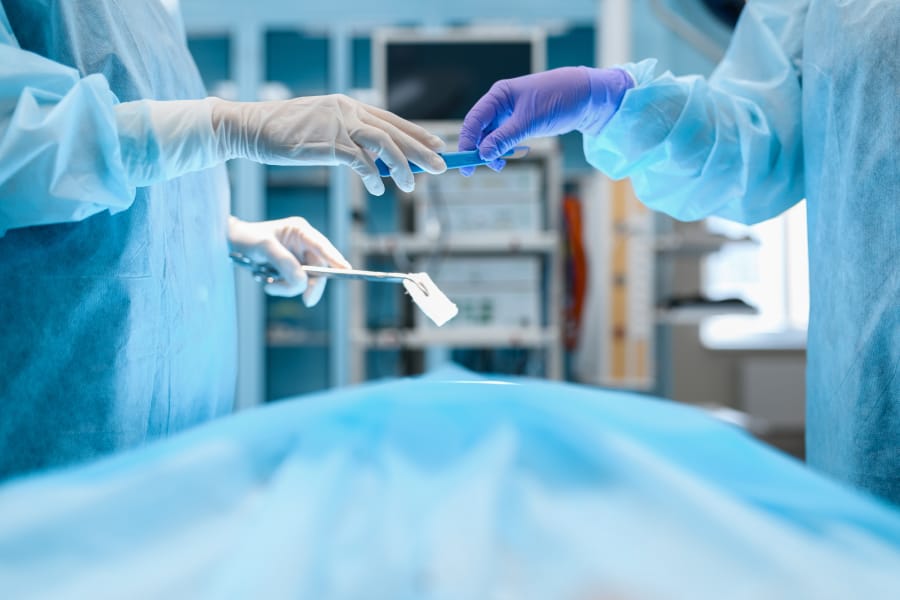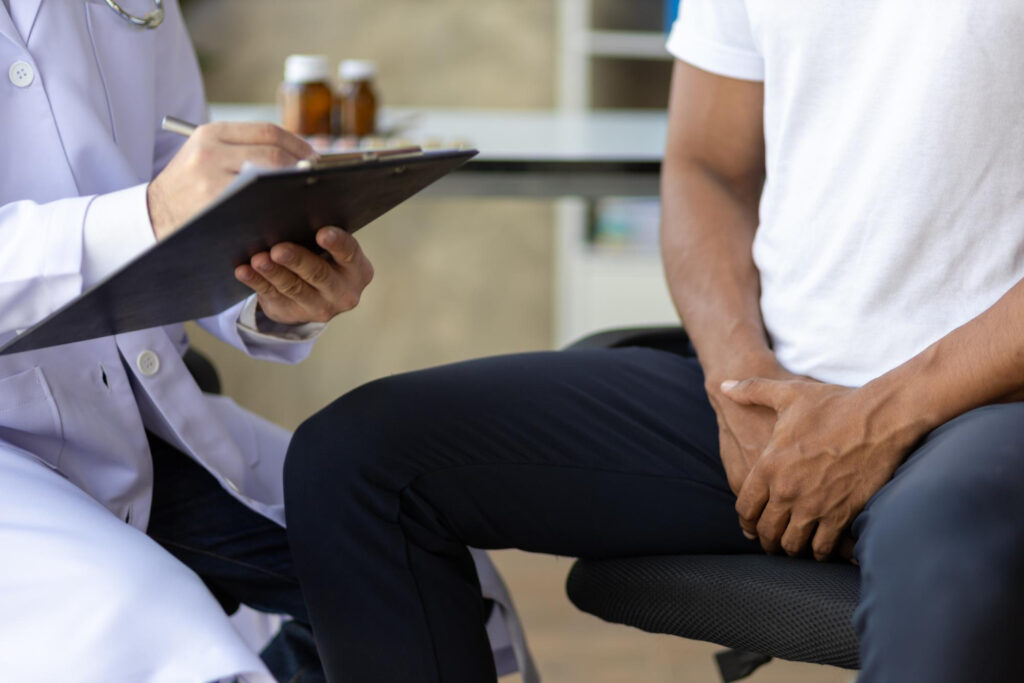Peyronie’s disease is a complex condition that can deeply affect a man’s sexual and psychological life. Characterized by penile curvature, pain, and erectile dysfunction, this pathology is often a source of anxiety, frustration, and embarrassment. Fortunately, effective and innovative treatments are now available. In this comprehensive guide, Prof. Fabio Castiglione, a specialist in urology and andrology in London, explains everything you need to know: causes, symptoms, diagnosis, and most importantly, how to treat Peyronie’s disease—both without surgery and, in more serious cases, through surgical intervention.
How to Treat Peyronie’s Disease: Complete guide 2025
What is Peyronie’s Disease?
Peyronie’s disease is caused by the formation of fibrous plaques inside the tunica albuginea, the elastic tissue surrounding the corpora cavernosa of the penis. These plaques prevent proper elongation during erection, causing:
- Abnormal penile curvature
- Pain during erection
- Penile shortening
- Difficulty with sexual intercourse
- Erectile dysfunction
The disease manifests in two phases: an acute phase (with pain and progressive curvature) and a chronic phase (in which the curvature stabilizes).
Can Peyronie’s Disease heal on its own?
One of the most frequently asked questions is: “Can Peyronie’s disease resolve spontaneously?”
- Only in 10–13% of cases does complete natural remission occur. In most patients, the disease either progresses or remains in its deformed state.
Prof. Castiglione’s response: “Waiting passively is highly discouraged. Timely intervention is crucial to prevent permanent damage.”
When is it too late to Treat Peyronie’s Disease?
It’s never too late, but the chronic phase requires different treatments than the acute one. Ideally, treatment should begin within the first 12 months, when the plaque is still active and changes are potentially reversible.
Note from Prof. Castiglione: “Even in the chronic phase, we can achieve excellent results thanks to the multimodal P-Shocks® protocol.”
What are the best treatments for Peyronie’s Disease in 2025?

Treatment depends on the disease phase, the severity of curvature, and the presence of erectile dysfunction. Let’s explore the available options.
Non-Surgical treatments (Acute and chronic phase)
Extracorporeal Shock Wave Therapy (ESWT)
- Non-invasive
- Relieves pain
- Enhances blood flow
- Stimulates tissue regeneration
Prof. Castiglione uses next-generation shock waves in his P-Shocks® protocol.
Intraplaque injections: Collagenase (Xiapex/Xiaflex)
- Approved by EMA and FDA
- Breaks down collagen in the plaque
- Effective for curvatures over 30°
Note: may cause bruising and swelling. Must always be administered by an experienced urologist.
Verapamil or interferon injections
- Anti-fibrotic
- Useful in early stages
- May reduce plaque and curvature
Penile traction therapy
- The only treatment that can increase penile length
- Recommended in the active phase to prevent shortening
- Also usable post-surgery
Oral therapies (limited evidence)
- Vitamin E: controversial efficacy
- Pentoxifylline: experimental anti-fibrotic effect
- Potaba: may reduce pain but with gastrointestinal side effects
Warning: Self-treatment with vitamins or supplements is often ineffective.
Innovative Treatments: The P-Shocks® Protocol
Prof. Fabio Castiglione has developed an exclusive multimodal protocol called P-Shocks®, combining:
- Shock waves
- PRP (Platelet-Rich Plasma)
- Microneedling
- Vacuum pump reshaping
- Nitric oxide stimulation
Book a consultation with Prof. Castiglione at +447830398165
Surgical treatments

Indicated only in cases of:
- Severe and stable curvature
- Refractory erectile dysfunction
- Failure of non-invasive treatments
Nesbit technique (Plication)
- Corrects the curvature
- Reduces penile length
- Suitable for curvatures under 60°
Grafting
- Lengthens the shortened side
- Recommended for curvatures over 60°
- Higher risk of erectile dysfunction
Penile Prosthesis
- For curvature + severe erectile dysfunction
- Straightens and restores sexual function
- Irreversible procedure
Prof. Castiglione performs these surgeries in specialized centers in London using the latest minimally invasive techniques.
How do doctors Treat Peyronie’s Disease in 2025?
In 2025, treatment for Peyronie’s disease has evolved significantly thanks to regenerative medicine and personalized therapy. Specialists like Prof. Fabio Castiglione follow an approach based on detailed clinical evaluation, including physical examination, dynamic penile ultrasound, and medical history analysis. Depending on the disease phase (active or stable), curvature severity, presence of erectile dysfunction, and patient preferences, the most effective therapeutic plan is chosen.
Today, non-surgical solutions are preferred: shock waves, traction, PRP, intraplaque injections, and multimodal combinations like the P-Shocks® protocol. However, in advanced cases, experienced doctors recommend surgery only after careful selection. This integrated and personalized approach is the best strategy to treat Peyronie’s disease safely, ensuring faster and less traumatic recovery.
Can Peyronie’s Disease Be treated without Surgery?

Yes, thanks to recent advancements. The P-Shocks® protocol, shock waves, and penile traction are currently the best alternatives to surgery.
Home treatments never replace professional medical therapy.
Can I Treat Peyronie’s Disease on My Own at home?
Frequently asked question: “How to treat Peyronie’s without a doctor?”
Clear answer: It’s not possible to achieve lasting improvement without a specialist plan.
However, you can support therapy with:
- Regular use of traction devices
- Avoiding smoking and alcohol
- Controlling diabetes and hypertension
- Physical activity and an anti-inflammatory diet
How long does it take to see results?
It depends on the treatment type:
- Shock waves: improvements after 3–4 sessions
- Injections: after 2 cycles
- Penile traction: 3–6 months of consistent use
- Surgery: immediate results after healing
Note: Patience is crucial. Peyronie’s disease is chronic and requires personalized treatment plans.
When to see a specialist?
Immediately, if you have one or more of these symptoms:
- Penile curvature during erection
- Penile pain (with or without erection)
- Difficulty during intercourse
- Recent erectile dysfunction
- Penile shortening
Conclusion
Peyronie’s disease is not a life sentence. Today, effective and safe treatments exist—from non-invasive techniques like shock waves to highly specialized surgeries. Prof. Fabio Castiglione, one of Europe’s leading andrology experts, offers personalized treatment paths in London, based on the latest scientific evidence.
Don’t wait for the situation to worsen. Early diagnosis is the first step toward recovery.
Peyronie’s disease? Choose the right treatment. Choose experience. Choose Prof. Castiglione.


